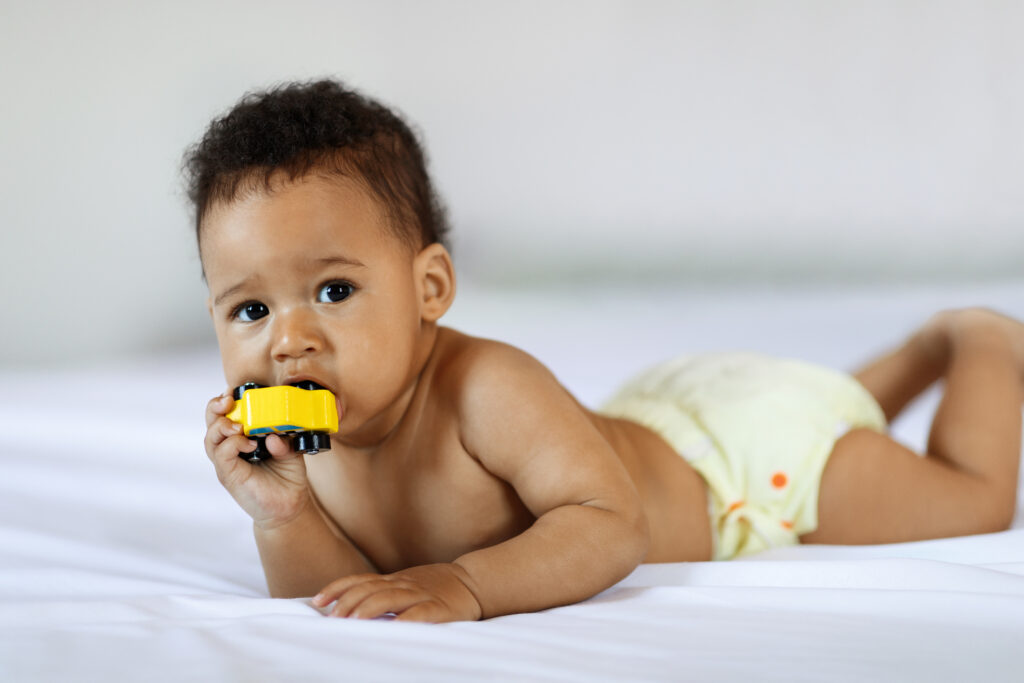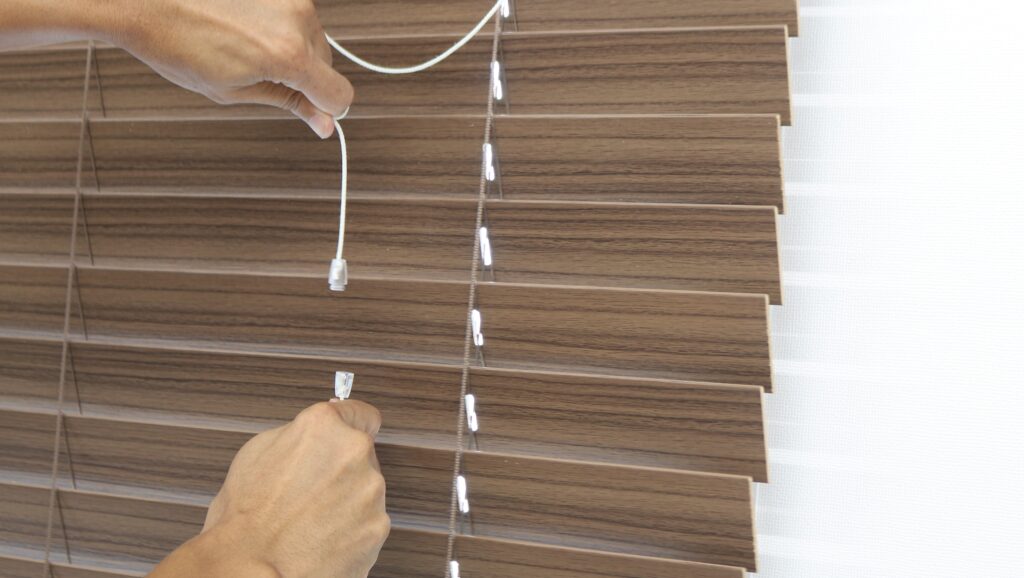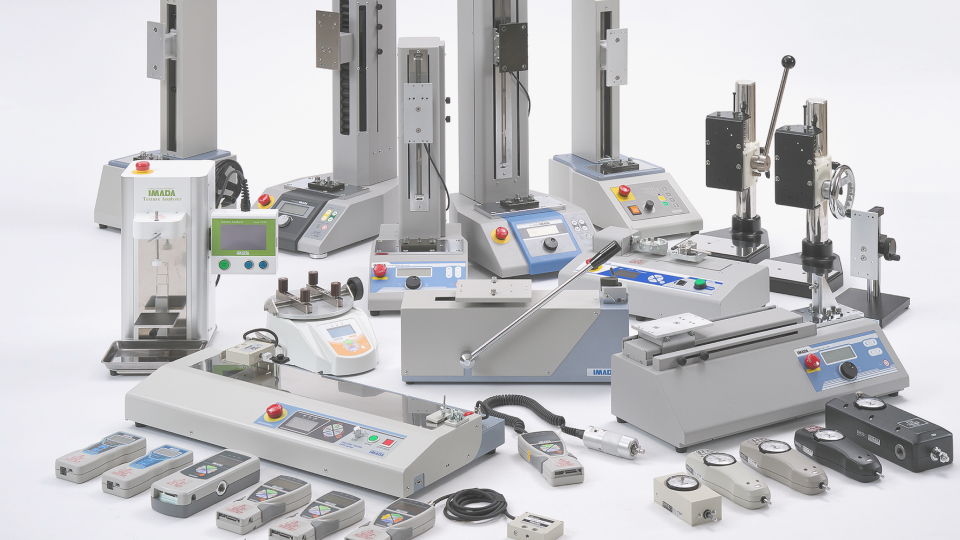Past incidents & How force measurement contributes to prevent them
I am a mother of two children. Now, I understand that the mattress for a baby should be firm, but before having children, I could never have imagined that a soft mattress could lead to a baby suffocating and losing their life. When I learned about this during prenatal classes at hospital, I was amazed at how fragile babies are. Even as they grow a little older, they can still put anything in their mouths and cause unpredictable accidents, which makes the sense of being constantly vigilant about accidents a part of parenting.

To protect adorable children from unforeseen accidents, there are things adults can do. One is to know the actual incidents of accidents as individuals. By being aware of actual incidents, you can take preventive measures for the children around you. On the other hand, there are actions that can be taken on a larger scale by manufacturing industries and companies. If safety measures are integrated into products themselves, it can act as a safety net that is stronger than just individual vigilance, thus preventing accidents more effectively.
In this context, examples of accidents involving children as reported by the Japanese government will be extracted and presented. Along with them, this will also explore what can be done from the perspective of individuals and manufacturing industries, focusing on the aspect of force measurements.The goal is to raise awareness of what can be done to prevent accidents and ultimately protect the children whether it’s from an individual standpoint or that of a manufacturing company, .
1) Suffocation accidents during sleep
Suffocation accidents during sleep are one of the typical causes of infant mortality. These accidents occur when infants sleep on their stomachs and their faces become buried in soft bedding. Let’s take a look at the preventive measures proposed by the Child and Family Agency in Japan.
Preventive measures proposed by the Child and Family Agency:
Original sentence
1.大人用のベッドではなく、ベビーベッドに寝かせ硬めの敷布団(マットレス)を使用すること
2.1歳になるまでは、仰向けに寝かせること
Translation by author
1. Put a baby to sleep in a baby bed (crib), not an adult bed. And use a firm mattress.
2. Until the age of one, lay the baby on their back when sleeping.

A firm mattress refers to a state where there is minimal deformation even with the weight of an infant. Based on this, what can individuals and companies do?
What individuals can do to prevent accidents:
When laying a baby to sleep at home, most people are likely to pay attention to the preventive measure 1 mentioned above. However, there may be instances when babies are put to sleep on their sides while out and about. In such cases, it is advisable to avoid laying them in places where there is significant sinking or deformation.
What companies can do to prevent accidents:
If a company manufactures baby mattresses, they can measure the firmness of the mattress and implement quality control. By measuring how much the mattress sinks under the expected load (weight), it becomes possible to establish data-based criteria for firmness.
The following video demonstrates the measurement of the rebound force of cushioning materials, which can be applied to test baby mattresses. (Since measuring the finished mattress as a whole would be too large, it would be necessary to cut out a test piece.)
https://www.forcegauge.net/en/solution/industry/packaging_containers_paper/48526
If you wish to measure the test piece on a larger scale, you can refer to the example of measuring the rebound force of a pillow in its original size in the following video:
https://www.forcegauge.net/en/solution/industry/textile_apparel/68223
2) Choking on small objects like toys
Children have a tendency to put anything in their mouths, so many parents are cautious about accidental ingestion. Let’s take a look at the preventive measures proposed by the Child and Family Agency.

Preventive measures proposed by the Child and Family Agency:
Original sentence
1.年上のこどものおもちゃには、小さな部品が含まれていることがあります。対象年齢になるまでは、こどもの手の届かない所に保管し、遊ばせないようにしましょう。
2.おもちゃの購入時や利用時は、商品の対象年齢を必ず守りましょう。
Translation by author
1. Older children’s toys may contain small parts. Until the child reaches the appropriate age, store such toys out of their reach and avoid letting them play with them.
2. When purchasing or using toys, always adhere to the recommended age range stated on the product.
In addition to the advice given above, I believe it is essential for both individuals and companies to confirm if baby toys are designed in a way that prevents detachment of any parts or components. This is because even baby toys can become loose with repeated chewing and pulling.
What individuals can do to prevent accidents:
You can check if any parts or decorations of the toys in your home are coming loose. For example, inspect fabric toys for any fraying near the decorations, or for plastic toys, ensure that there is no looseness at the connection points.
What companies can do to prevent accidents:
If a toy manufacturer, they can test and manage the quality by ensuring that parts and decorations are sufficiently sturdy and cannot be easily detached when pulled. Methods of testing could include applying a predetermined force to see if parts detach or checking the force required to detach parts.
As for objects that babies might put in their mouths, clothing buttons and decorations are also worth considering. The following video demonstrates an example of a tensile strength test for clothing buttons, which is actually conducted by children’s clothing manufacturers. Please have a look for reference: Button Tensile Strength Test: https://www.forcegauge.net/en/solution/force/tension_test/67182
3) Choking hazards due to blind cords and curtain strings
Not only bedding and small objects, but blind cords and curtain strings also pose a risk of choking.
I recall an incident when our company moved to a new building, and upon opening the blinds in a certain room, the cord’s joint suddenly detached, leading to the fear of damaging the brand-new blinds. Along with the concern, I wondered why it came off even though I didn’t pull it forcefully. I later learned from a colleague that the joint is designed to detach when a certain amount of force is applied to prevent children from choking with the cord. The joint was safety joint. It was an “aha” moment of understanding.

What individuals can do to prevent accidents:
Recently, it seems that blinds with such safety features have become more common. Choosing products with such safety measures is one preventive measure. In fact, the Child and Family Agency also recommends “selecting products with high safety standards.”
Preventive measures proposed by the Child and Family Agency:
Original sentences:
1.ひもが首に絡まらないように、子供の手の届かない所にまとめましょう
2.ソファなど、踏み台になる物をひもの近くに設置しないように気をつけましょう
3.ひも部分がないなどの安全性の高い商品を選びましょう
Translation by author
1. Bundle cords out of the reach of children to prevent tangle around their necks.
2. Be cautious not to place any items that could serve as footholds, such as sofas or stools, near the cords.
3. Choose products with high safety standards, such as those without cord components.
What companies can do to prevent accidents:
As a safety feature for blinds, there are mechanisms like the safety joint, which detaches when a certain pulling force is exceeded. To prevent choking accidents, the joint should detach with a force smaller than the weight of a child. It is essential to objectively verify whether the joint reliably disengages when pulled, be it in a slow or sudden manner, if a child gets tangled in the cord. One way to validate this is by using a measuring device called a force gauge to quantify the force required to detach the safety joint when pulling the cord.
Lastly
In this discussion, we have cited three examples from Child and Family Agency (cfa.go.jp) in Japan and talked about how accidents can be prevented from the perspective of force measurements. If there was even one point that made you think, “Ah, I should be careful,” or “This was helpful,” I would be delighted. And I sincerely hope for the elimination of unforeseen accidents involving young children.
Quoted from: 窒息・誤飲事故|こども家庭庁 (cfa.go.jp)
Author: Minae (IMADA CO.,LTD)





